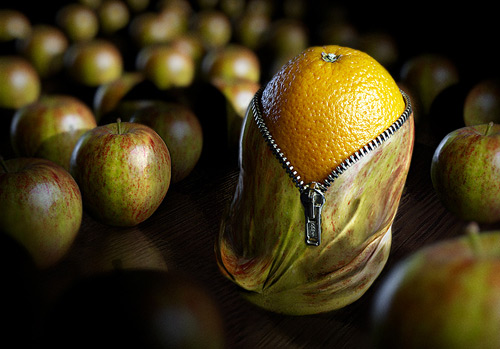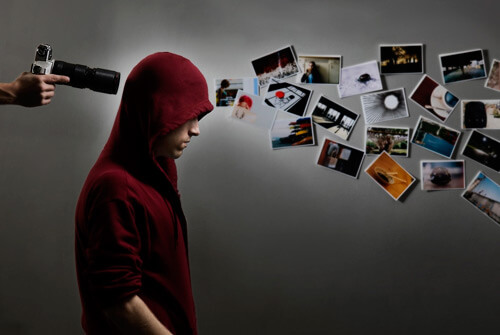Expanding on the idea of art acting as an agent in our societies, Propaganda’s sole purpose is to act upon and influence society through the medium of posters, ads, etc. towards a specific cause or view. I chose to focus on war propaganda as they are the most abundant and personally are more interesting. Racial prejudices and stereotypes run rampant in war propaganda as well as patriotic symbols such as flags. This form of propaganda was used in World War 2 to recruit men into the army and to raise money for the war, appealing to fear and heroic ambition. American posters during this time mainly depicted axis leaders in antagonistic symbols such as snakes, and many appealed to buy war bonds. On the other side the Nazis use propaganda to the furthest extent, molding every form of media to display some message that influenced the German people’s views. Nazi Germany is a very interesting environment in which to examine just how much art influences us. Nazi propaganda was mostly filled with anti-Semitic messages, depiction of Americans as monsters and messages convincing the population of the country’s productiveness and military prowess.
Sunday, November 28, 2010
Role of Art in Societies
I have always thought that changes in art happen at a time when our view is influenced by some outside element. This could be an invention such as a camera, or it could be something as pivotal as a revolution such as the French Revolution which sparked many changes in French art. I came across and interesting essay by composer Richard Wagner who examines the role of art thoroughly and discusses its degradation through time. He believes the highest conceivable form of art to be Drama, and it is from this point on that the degradation begins. As Greece is absorbed in the Roman Empire Drama gives way to philosophy. He believed that the Christians did not create art for the very joy of it but instead as an offering to their God, when instead they should offer in deeds and not objects. It is from here that Wagner notes that changes in society have caused art to sell 'her soul and body to a far worse mistress - Commerce.' Art is split into two categories here, Opera and plays. He says that plays lack ‘the idealizing influence of music’ and operas ‘forestalled the living heart and lofty purpose of actual drama’. Although I do not agree with Wagner’s view that the newer forms of art are a degraded subdivision of the “original” art of drama, his examples of how art has changed through cultural changes help understand the role of art better.
Titian Exhibit
Last Thursday I went to the High Museum to view the traveling exhibition displaying works of art from the golden age of Venetian paintings, the main focus on Titian and his Diana paintings. As our assignment was to analyze the lay out of the exhibition, I found myself just glancing at the works of art and focusing on their placement, the color of the room and the room layout. But this exhibition forces you to view the art as you cannot view the exhibition highlight (Diana paintings) without first seeing the sketches that were the development of the Venetian style. When I did finally reach the main paintings I was first surprised for a moment at the bold nudity that was displayed in the paintings. This theme of nudity runs through both Diana paintings, almost connecting the two into one image. The paintings made no sense to me as I am not familiar with the stories they try to depict. Although I was certainly impressed by the detail that the artist captured, the realism was at a stark contrast with Dali’s exhibit, which I previously viewed.
We recently talked about the lack of recognition of talented female artists and their under representation in museums, who instead favor male artists. This exhibition clearly displayed that this trend has been in place for some time and continues to dominate museums today. The Titian Exhibit displays art pieces solely by male figures, a the title of the exhibit suggests. The previous exhibit I viewed (Dali’s Exhibit) follows the same trend. I find it hard to believe that such inequality can still exist, what makes a male artist any better than a female artist?
Sunday, November 21, 2010
The Photo Argus
Presentations
I found the many different points of view that were displayed in the presentation very interesting. Although some of us had similar pictures we had completely different takes on them. Although popular culture tends to direct our thinking by telling us what we should think, we still end up with completely different views on the same subject. I was intrigued by the presentation that zoomed in on one object and slowly zoomed out, showing how context affects our view. This was a very unique and fascinating theme choice.
Visual Essay Project
The visual essay project was deceptively hard mainly because of the large amount of possibilities of themes and ensuring that each picture made a point in that theme. But after choosing the theme, which changed a few times over the course of the project, it was easier and much more interesting. This project taught me the true value of public art in our communities, and thus my theme was centered on the idea of communities. An interesting aspect of this project was photo editing, I did not make any major alterations to my pictures but I did mess around with them in Photoshop. In order to focus on the public art more I took out any distractions in my pictures. This included people, cars, etc., anything that wasn’t a permanent part of the environment. This was definitely a new style of presentation for me, and I found it quite effective and interesting.
Abstract Photography
This form of photography aims to take pictures that have no clear or discernible subject or the subject appears like an entirely unlike object. This intrigued me, how does someone take something real and make it appear such that no meaning can be discerned. As I looked up how such a thing could be achieved, I saw many pictures that I really liked. Most of the pictures were composed such that parts of a subject could be seen but not enough as to recognize the subject. Many were taken in form of macro photography which I have discussed earlier, focusing and zooming in until we can no longer see the bigger picture. Contradictory to my blog on abstract art I actually enjoyed the photographs that I came across. Instead of hopelessly looking for a meaning like I did in the paintings I instead found it setting a mood. I believe this difference emerges from the fact that it is something real, as much as the photographer augments our point of view, what we are seeing is in fact something tangible and real unlike the apparently empty lines and colors of abstract art. They consist of natural colors, natural lines and curves, and natural lighting for the most part. This brings in another previous blog on photo editing; a lot of this is implemented in order to impart the right mood through the photograph.
Thursday, November 18, 2010
Public Art
 The definition of public art is any painting or sculpture designed to be displayed in public open space or art that is envisaged as part of the life of the community in which it is sited. The second part of the definition is what interested me more. Public art had to be something that was integrated into our communities and represents the ideals of the community. I decided that this would be my theme, exploring how this definition played out in different communities. I found that in general the public art in the communities I studied did indeed represent the qualities and ideals of that community. What I found interesting was that I did not require extensive amounts of context for me to understand those values; instead I built the community around the public art through understanding it. And I could also clearly see the integration of the public art in the lives of the people living there. Many sat by the public art, if not admiring the aesthetic appeal then just appreciating the environment that public art creates.
The definition of public art is any painting or sculpture designed to be displayed in public open space or art that is envisaged as part of the life of the community in which it is sited. The second part of the definition is what interested me more. Public art had to be something that was integrated into our communities and represents the ideals of the community. I decided that this would be my theme, exploring how this definition played out in different communities. I found that in general the public art in the communities I studied did indeed represent the qualities and ideals of that community. What I found interesting was that I did not require extensive amounts of context for me to understand those values; instead I built the community around the public art through understanding it. And I could also clearly see the integration of the public art in the lives of the people living there. Many sat by the public art, if not admiring the aesthetic appeal then just appreciating the environment that public art creates. Sunday, November 14, 2010
Photo Editing
Photo editing has entered a very negative light these days. From altering photo shoots in magazines to cover-ups in conspiracy theories, editing is now seen as a tool of deception and a creator of insecurities. But editing is also meant to alter photos for aesthetic appeal; essentially the photographer becomes the painter and has a larger set of tools to choose from when deciding to express him or herself through photographs.
Macro Photography
 Macro Photographs are images that are composed of extremely focused and close-up pictures of a subject. Due to recent technologies this type of photography has become easier to produce and with better results. By focusing on one thing in perfect clarity, it allows us to absorb that one element in the image without distraction and in greater depth. These photographs also give us an emphasized feeling of time being frozen as motion does not appear as blurs because there is not motion in these pictures.Here are a few examples:
Macro Photographs are images that are composed of extremely focused and close-up pictures of a subject. Due to recent technologies this type of photography has become easier to produce and with better results. By focusing on one thing in perfect clarity, it allows us to absorb that one element in the image without distraction and in greater depth. These photographs also give us an emphasized feeling of time being frozen as motion does not appear as blurs because there is not motion in these pictures.Here are a few examples:
Math in Art
Math plays an essential role in art as a means to create aesthetically pleasing compositions, ratios that appeal to the human eye have been calculated by math and are used by many artists. One such ratio is the “The golden Ratio”, roughly equal to 1.618, this ratio has been discerned in Greek vases and Chinese pottery and is seen frequently in nature. One mathematician, Adolf Zeising that the golden ratio would pop up everywhere in nature and believed it to be a governing universal law. The ratio can be found in DNA, shells, butterflies, flowers, fishes, etc. Two aspects of math in art I would like to show are M.C. Escher’s paintings and fractal art.


 M.C. Escher is a mathematician who is famous for his paintings that utilize math to create tessellations. Fractal art is the ultimate implementation of math in art. Fractal art is created by processing algorithms in powerful computers , which then form complex figures that surprisingly have aesthetic appeal. Here are a few
M.C. Escher is a mathematician who is famous for his paintings that utilize math to create tessellations. Fractal art is the ultimate implementation of math in art. Fractal art is created by processing algorithms in powerful computers , which then form complex figures that surprisingly have aesthetic appeal. Here are a fewAbstract Art
Abstract art is defined as art that does not depict recognizable scenes or objects, but instead is made up of forms and colors that exist for their own expressive sake. This explained why I never find anything when I try to identify something familiar in the painting by tilting my head, squinting my eyes, etc. Why would the artist prefer to convey their message through something that is unfamiliar to the viewer. It seemed like someone inventing a completely new language and trying explain something as complex as feelings to me. I would accept it as merely a decoration but many abstract pieces are far from aesthetically pleasing and instead look like haphazard arrangement of colors and shapes that display no apparent meaning. If it is meant to affect us and our feelings, then wouldn’t we need to share the same experiences as the artist to understand what those colors and shapes mean? Aren’t such things a matter of personal experiences that differ between every person, how are we expected to feel anything if it means nothing to us. You might stare at it and invent a reason for it to move you, but I do not believe this is truly the effect of the art instead it is our minds assigning an agent for something that you feel you need.
Subscribe to:
Posts (Atom)
















